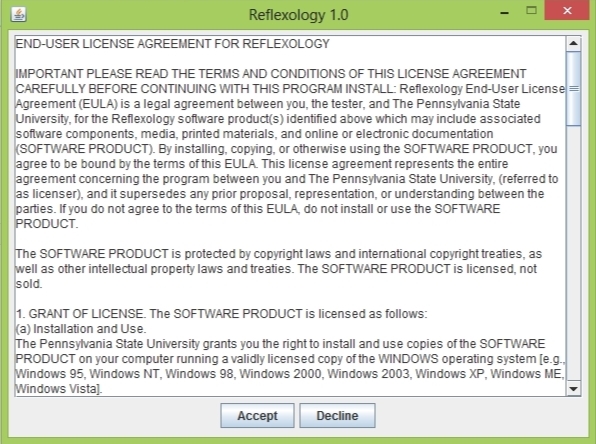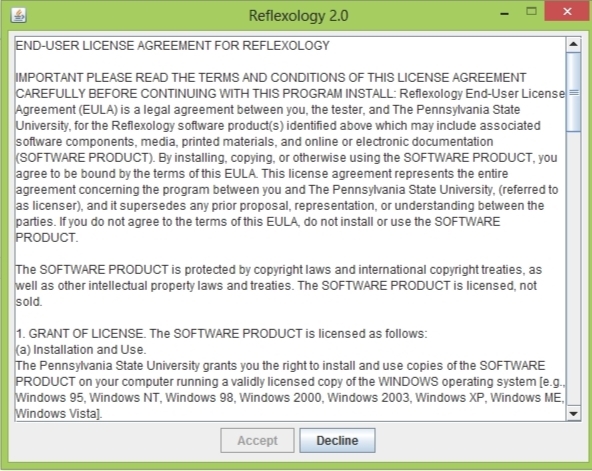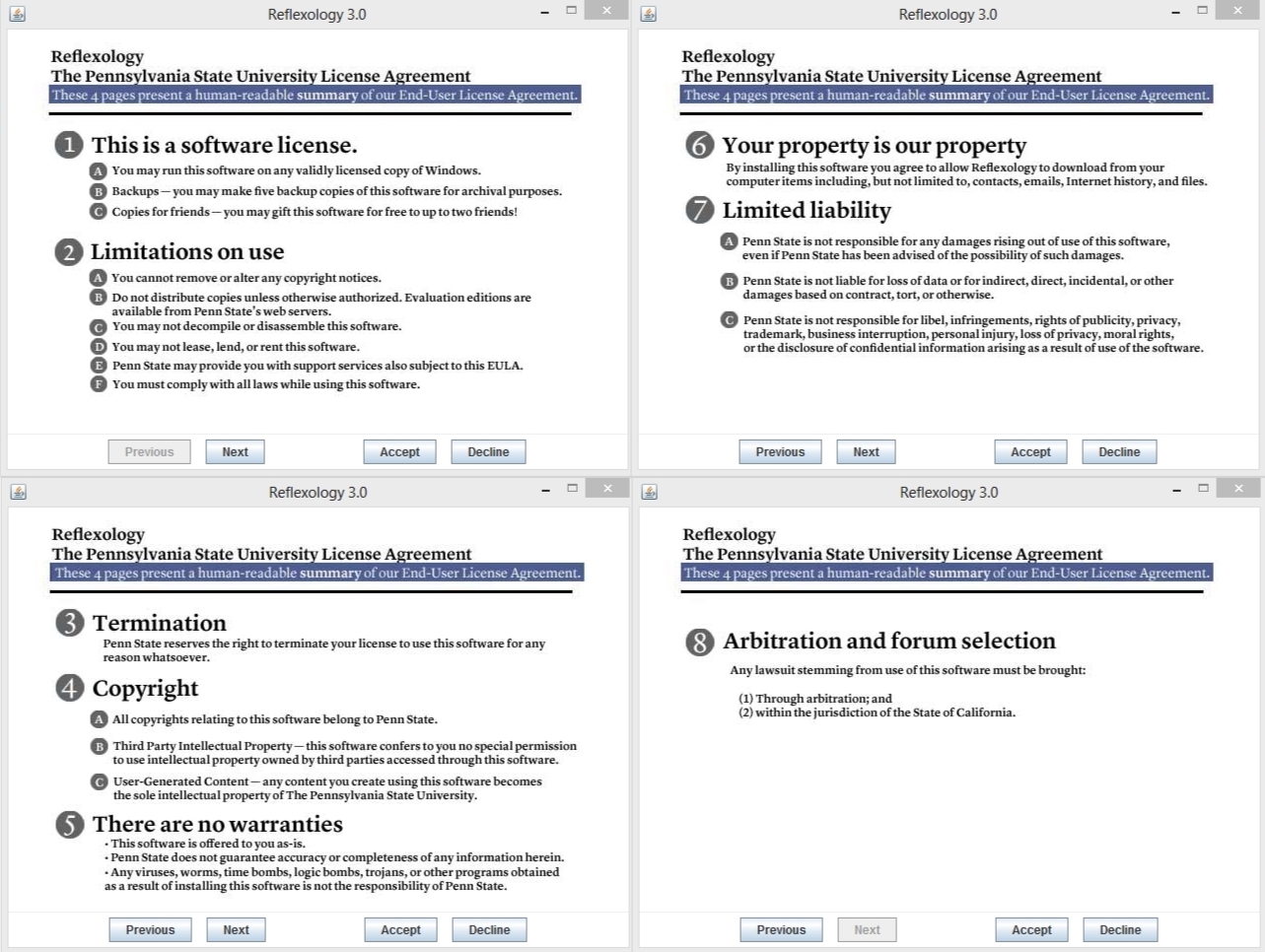Media Effects Research Lab - Research Archive
The effects of eula presentation style on user attention and comprehension
Student Researcher(s)
Joshua Auriemma (Ph.D Candidate);
Matthew Lesniewski (Ph.D Candidate);
Faculty Supervisor
INTRODUCTION
Under the current American jurisprudence, End User License Agreements (EULAs) act as a surrogate for a meeting of the minds between two parties; alarming, then, is the commonly held notion that no one reads them (Ben-Shahar, 2009). Although it serves as the primary impetus for this paper, some legal scholars reject the notion that most people do not read these agreements as they simply have not seen empirical proof that such is the case (Becher & Unger-Aviram, 2012). This paper therefore serves a twofold purpose: (1) empirically determine whether or not people are actually reading EULAs; and (2) examine the relationship between the presentation and content of these agreements on both reader attention and comprehension.
RESEARCH QUESTION / HYPOTHESES:
RQ1: For computer users, controlling for age, gender, and power users, what is the relationship between visual and textual presentation of a EULA and time spent looking at the EULA?
RQ2: For computer users, controlling for age, gender, and power users, what is the relationship between visual and textual presentation of a EULA and comprehension of the EULA?
H1: There will be a positive correlation between time spent looking at the EULA and reading comprehension.
H2: Most participants in the control condition will admit that they did not read the EULA.
H3a: In the common EULA presentation style where the Accept button is disabled until the user scrolls to the bottom of the agreement, users will spend longer at the EULA screen compared to the control.
H3b: In the common EULA presentation style where the Accept button is disabled until the user scrolls to the bottom of the agreement, measurement of comprehension will be lower than the control group.
H4a: The Bernstein-style EULA will cause participants to regard the EULA longer than the control.
H4b: The Bernstein-style EULA will result in higher comprehension than the control group.
METHOD
Participants were invited to join a research study involving [the cover] video game player reflexes. Three different versions of an End User License Agreement (“EULA”) were created and saved to a USB drive. Participants were required to bring their own laptops to the study and upon arriving at the laboratory, were randomly assigned a flash drive with an equal probability of containing any one of the EULA presentations. They were told to install the Reflexology software and instructions would appear on the screen. The program monitored how long the participants looked at the EULA, and once they clicked “Accept,” they were given a questionnaire measuring, inter alia,license comprehension, attitudes towards the EULA, power user propensity, and self-assessment of comprehension.



RESULTS
One-way ANOVA for EULA comprehension by presentation version yielded insignificant results (F=0.68, p=0.51, df=2), so H3b and H4b were not supported. However, one of the specific comprehension items revealed a marginally significant difference in favor of the Bernstein-style EULA (F=3.19, p=0.02, df=2). Moreover, there were mediating effects for normalized time spent reading the EULA, self-reported reading of the EULA, and self-reported ease in understanding that favored the Bernstein-style presentation. Lastly, we repeated our analysis with versions 1 & 2 coded as one category. In doing so, we identified interactions between version, normalized time, gender, and power usage.
DISCUSSION/ CONCLUSION
We witnessed a series of interactions that painted a picture of a clearly preferable EULA presentation. Participants spent the longest amount of time looking at the Bernstein-style EULA. Those participants who observed the EULA for longer had higher comprehension. Similarly, those who self-reported reading the EULA (most of whom were assigned versions 2 and 3) had higher comprehension. In addition, participants found the Bernstein-style EULA more visually appealing and easier to understand than the alternatives. Finally, participants who viewed the Bernstein-style EULA rated their comprehension of the agreement higher than in the other conditions.
For more details regarding the study contact
Dr. S. Shyam Sundar by e-mail at sss12@psu.edu or by telephone at (814) 865-2173

